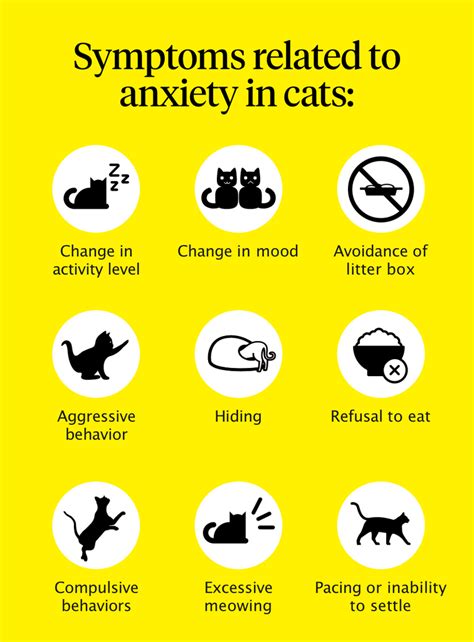Introduction
Cats are beloved companions known for their independence and playful nature. However, beneath their furry exterior, they can experience a range of health issues, including anxiety and respiratory problems. This article explores the connection between cat anxiety and respiratory health, highlighting the prevalence, causes, and potential treatments.

The Prevalence of Cat Anxiety
Anxiety is a common feline concern, with studies suggesting that up to 30% of cats suffer from some form of anxiety disorder. This can manifest in various ways, such as excessive vocalization, scratching, pacing, and hiding.
Causes of Cat Anxiety
The causes of cat anxiety can be multifaceted, including:
- Changes in the environment (e.g., moving house, new furniture)
- Stressful events (e.g., separation from owner, veterinary visits)
- Environmental triggers (e.g., loud noises, unfamiliar smells)
- Underlying medical conditions (e.g., hyperthyroidism, pain)
Impact of Cat Anxiety on Respiratory Health
Anxiety can significantly impact a cat’s respiratory health. When a cat experiences anxiety, its sympathetic nervous system is activated, triggering a physiological response known as the “fight-or-flight” response. This response includes increased heart rate, respiratory rate, and muscle tension.
Over time, chronic anxiety can lead to a weakened respiratory system, making cats more susceptible to respiratory infections and other respiratory health problems.
Respiratory Health Problems Linked to Cat Anxiety
Several respiratory health problems have been linked to cat anxiety, including:
- Upper respiratory infections (URIs): Anxiety can increase the risk of URIs by impairing the immune system and making cats more likely to exhibit behaviors that can spread infection, such as excessive licking and scratching.
- Lower respiratory infections (LRIs): Chronic anxiety can weaken the lungs, making cats more susceptible to LRIs, such as pneumonia and bronchitis.
- Asthma: Asthma is a chronic respiratory condition that can be triggered by stress and anxiety. In cats, asthma can cause coughing, wheezing, and difficulty breathing.
Strategies for Managing Cat Anxiety
Managing cat anxiety can improve respiratory health and overall well-being. Effective strategies include:
- Environmental enrichment: Providing cats with a stimulating and enriching environment can reduce anxiety levels. This includes offering plenty of toys, hiding places, and scratching posts.
- Feliway diffusers: These devices emit synthetic pheromones that mimic those released by mother cats when nursing their kittens. Feliway diffusers can help create a calming environment for anxious cats.
- Behavior modification: Techniques such as positive reinforcement and counter-conditioning can help cats learn to cope with anxiety-provoking situations.
- Medication: In some cases, medication may be necessary to control anxiety. Anti-anxiety medications can help calm cats and reduce the physiological effects of anxiety on the respiratory system.
Common Mistakes to Avoid
When managing cat anxiety, it’s important to avoid common mistakes such as:
- Ignoring the problem: Anxiety can be a serious issue that should not be ignored. If you suspect your cat is anxious, seek professional help to address the underlying cause.
- Punishing the cat: Punishment can worsen anxiety and create a negative association between the owner and the cat. Instead, focus on positive reinforcement and behavior modification techniques.
- Using inappropriate treatments: Some anxiety treatments that are effective for humans may not be suitable for cats. Consult with a veterinarian before using any home remedies or over-the-counter medications.
Future Trends and Innovations
Research into cat anxiety and respiratory health is ongoing, and new trends and innovations are emerging to improve diagnosis and treatment:
- Advanced imaging techniques: X-rays and CT scans can help identify underlying respiratory conditions that may contribute to anxiety.
- Telemedicine: Telemedicine platforms allow cat owners to consult with veterinarians remotely, making it easier to access care and manage anxiety in the comfort of their own homes.
- Personalized medicine: Advancements in genetic testing and behavior analysis can help tailor treatment plans to each cat’s individual needs and respiratory health risks.
Conclusion
Cat anxiety is a significant concern that can impact respiratory health. By understanding the causes, effects, and management strategies for cat anxiety, cat owners can help their feline companions live healthier and happier lives. As research continues to advance, new innovations and personalized treatments will further enhance the well-being of cats with anxiety and respiratory issues.





















